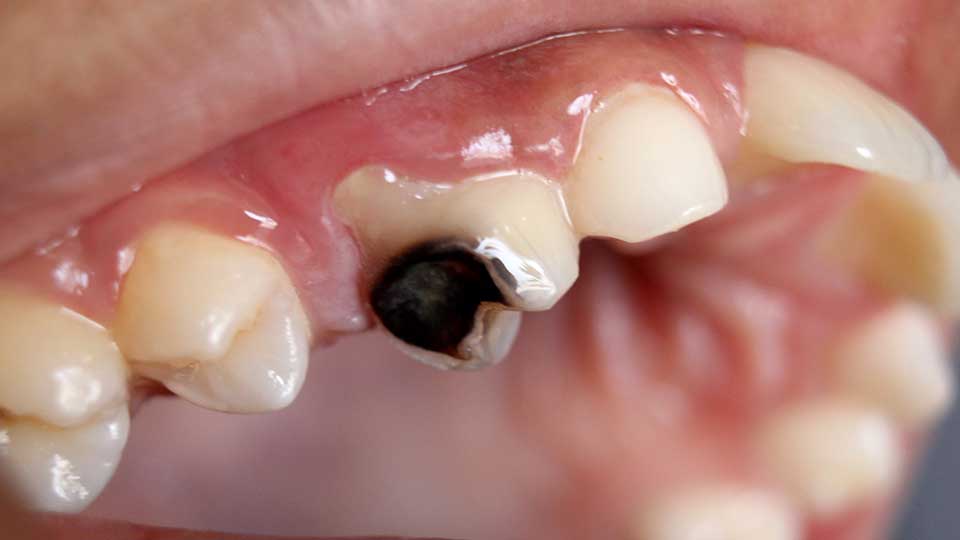What if you were rotting away inside yourself and had no idea it was happening?
It sounds like a nightmare, but it’s actually a reality with a single name: cavities. And it’s possible you are creating more each day without even knowing it.
Fortunately, you can start making things better right away. Keep reading our guide to discover the common signs of a cavity and how to treat them!
What Is a Cavity?
“Cavities” can go by many other terms, including “tooth decay.” This name is accurate because cavities are caused by bacteria in your mouth that chips away at both the enamel and the tooth underneath it.
Treating cavities can be both painful and expensive. As always, the best solution is prevention, and this starts by understanding the many different signs of a cavity.
Signs of a Cavity
There are many potential signs of cavities developing. Make sure you know them all so you can take care of the problem before it gets worse!
Pain
The most obvious sign of a cavity is pain. This may come from a tingling pain when you are chewing or persistent toothache that happens when you are not chewing.
If your teeth “only” hurt when you are chewing, then you will likely be able to fix things by getting a filling from the dentist. If you are experiencing pain even when you’re not chewing, this is likely from an infected nerve that will need to be fixed via a root canal.
Sensitivity
Another major sign of a cavity is increased sensitivity on or around a particular tooth. This may be a sensitivity to either sweets or to temperature.
The sensitivity to sweet foods is occurring because the enamel of the tooth has started wearing away, exposing sensitive layers that will tingle in pain while you eat.
Sudden sensitivity to food (sweet or otherwise) that is hot or cold may be a sign of tooth decay. If you’ve always had such a sensitivity, it’s no big deal: that’s just how your body is wired. But if the pain is new, then your body is trying to tell you about a cavity!
Sights and Smells
So far, we’ve covered cavity symptoms that you can feel inside your mouth. However, there are signs that involve no pain at all, including bad breath and unsightly teeth.
As we mentioned earlier, cavities are caused by the spread of bacteria on your teeth. This bacteria has an unpleasant smell, so as tooth decay spreads, your breath may get progressively worse.
In some cases, cavities can also be identified visually. They will look like unexpected stains or spots on your teeth. These spots are usually dark, but in some cases may be white.
Tooth discoloration and spotting may be caused by other factors than cavities as well. We recommend having a professional dentist inspect these issues and determine if they are signs of cavities or not.
Holes and Heat
There are two more cavity symptoms that it’s easy to overlook. This is because many people end up attributing these signs to something other than cavities.
First, a hole in your teeth may be a sign that enamel has been significantly worn away. Many people attribute this to some other kind of tooth damage, but unless you’ve had a mouth injury recently, this is a sign of a cavity.
Believe it or not, a fever can also be a sign of a cavity. This is caused by your ongoing tooth decay, but it can be difficult to differentiate from a fever with other causes. As always, you should consult with a dentist to be sure.
How to Treat Cavities
There are many different ways to treat cavities. It’s important to understand them all so you can better understand your overall oral health.
Prevention
As we mentioned earlier, prevention is always the best form of “treatment” when it comes to cavities. Why deal with cavities, after all, when you can prevent them altogether?
The basics of prevention include brushing your teeth twice a day and flossing at least once a day. You should also limit your sugary snacks and see the dentist at least twice a year for a cleaning.
Dental Fillings
The most common form of treating cavities is one that you may already be familiar with: dental fillings. And while many people dread the sound of the dental drill, this is a relatively easy form of treatment.
The basic idea behind this is that the dentist will drill out the portion of your tooth that has decayed and then replace it with a sturdy material. This material may be made of anything from composite resin and porcelain all the way to silver or gold.
Dental fillings only work when the tooth decay is relatively mild. More serious treatment is needed in the event of more serious cavities.
Crowns and Root Canals
Some cavities are severe enough to require a dental crown. This is like a cap that the dentist puts over your tooth to restore it to the original shape.
Caps may be necessary if the cavity is too big for regular fillings or the tooth has been severely damaged or cracked.
A root canal is necessary if the pulp inside your tooth is inflamed or even infected. This happens due to extensive tooth decay and is fixed by removing the nerve and pulp and then fixing and sealing the tooth.
Overall, root canals are not as bad as pop culture would have you believe. However, they are something of a “last resort” when it comes to tooth decay. It’s much better to identify and treat cavities before they require this extensive treatment!
The Bottom Line
You know how important it is to have a good dentist to help identify signs of a cavity and to prevent and treat your cavities. But do you know where you can find the best dentist in the area?
Doug Lewis Dentistry is the premier dental authority in Birmingham, AL. To see how we can make your smile shine again, contact us today!

